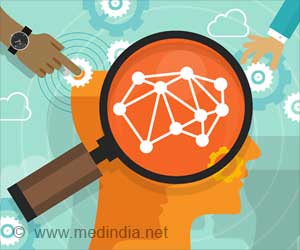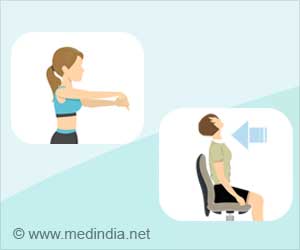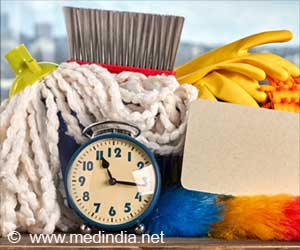A role model is one who has the ability to influence lives, values and lifestyles. It is true that social norms keep changing with the times and, currently, we live in a world where media rules the roost and plays a large role in setting trends in society. Parents and teachers find it increasingly difficult to impart the right principles of human behavior to the young as the media almost always pulls them in a different tangent.
Children often follow 'popular' role models in how they behave and how they react to a situation. This reflects in what they eat, what they watch, where they go out and whom they go out with. The influence of television, Internet and now cell phones is changing our societal interpersonal communication methods.With information becoming more personalized and social networking taking new dimensions, it is difficult for teachers and parents to know how these changes are likely to influence the psychological balance and emotional maturity of the young ones. Parents find themselves in constant emotional turmoil trying to monitor their wards' behavior.
To make matters worse there also seems to be an erosion of sorts in the moral values of our current generation, thanks to the popular television soap operas.
Not surprisingly these rapid changes are resulting in many families becoming dysfunctional. To understand our young, we need to take a closer look at who is influencing their lives and behavior. Nevertheless, the young people ought to be credited with some intelligence in distinguishing right from wrong.
Celebrity Models
The Ugly: Celebrities make unsatisfactory role models for a variety of reasons. Their celebrity status keeps them in the popular news and what they do or do not impacts young impressionable minds. Public figures who display brash behavior and talk and act as if they lived only to please themselves have an obnoxious influence on the young. Shah Rukh Khan's smoking habits, John and Bipasha's much flaunted live-in relationship, flamboyant lifestyles—be it Michael Jackson, Britney Spears or Paris Hilton, to name a few, are played up by the media, without the least thought about how it will influence some young minds, in making the right choices in life.
The Good: If there are hundred bad influences once in a way there are also instances such as those of George Clooney raising the Darfur issue to world attention and Imran Khan rallying public support to build a much-needed cancer hospital in Pakistan or Aishwarya Rai propagating the 'Eye donation'.
It remains to be seen if action groups and governmental bodies use celebrity endorsement to effectively combat poverty and hunger, achieve universal elementary education, promote gender equality and empower women, reduce child mortality, improve maternal health and other such significant areas that cry for attention.
Multimedia Models
It was a common experience, a generation ago, for young children to make dummy swords and engage in mock duels, as an aftermath of seeing an action movie. Now, kids chase each other with toy guns.
The multimedia has taken them one step further into a virtual world where they kick, push, shove, beat up, stab or shoot the opponent and most often are rewarded with seeing the other's blood splaying all over the screen/scene. The video game Grand Theft Auto (GTA) encourages the kind of role-playing where each player gets to beat up people and rob banks.
'Reel' Models
'Reel Models' don't completely fit to a T either. Ever since an Indian kid jumped off several floors, a la Shakthiman, even advertisements carry statutory warnings informing the public that professionals have performed such stunts, discouraging them from imitating the feat.
Occasionally, though, there are also instances where the lead character in a movie can inspire the young to overcome great odds and reach higher levels of excellence. Most of Rajinikant's roles of a do-gooder, hard worker and achiever have won the charismatic Tamil actor a youth fan following of mammoth proportions.
Real Role Models
Role models don't necessarily have to come with frills and fancies. Nicknamed by Winston Churchill as the 'half-naked fakir,' Mahatma Gandhi's great impact on people all over the world made history. India's former president Dr. Abdul Kalam, known as the 'people's president', was a man whose hard work and determination saw him rise from a poor school boy in a remote South Indian village to a science teacher, a rocket scientist and to the most influential president of India. His success as a role model largely depended on his capacity to reach out to all Indians cutting across barriers of class, caste, creed, age and gender, encouraging them to dream and build an India that would be 'developed' in every sense of the word.
Dr. Kalam's dream for a better India in a better world caught the popular imagination and his email box was flooded with mails from children and young people alike, all of which he took time to personally read and respond.
Abraham Lincoln, Martin Luther King, Nelson Mandela, Mother Teresa were all simple people who rose to great heights by their exemplary living and contribution to society.
Readymade Role Models
Governments in most countries are beginning to take a closer look at some of the challenges facing young boys and girls of today. Smoking, alcohol, drug dependency, promiscuity, peer-pressure, bullying, fear of exams and low self-esteem are some of the issues that need to be addressed almost immediately.
It is a futile exercise asking pop stars, movie stars and politicians to act responsibly thereby becoming good role models for the young. Certain countries in the West, Britain for example, are toying with the idea of developing certain public figures as role models to inspire the young to right thinking and exemplary living.
Given the fact that young people prefer to explore and exercise their choice in every aspect of living, they most certainly will take an instant dislike to anything that even remotely resembles a code of conduct that is dictated to them from above. So how good a chance government-sponsored role models stand in capturing the attention of the young is a moot question.
Note to Policy Makers
If a sound system of values is built into the basic educational system and taught to children and young people effectively, they may not be easily swayed by ‘popular’ culture. The idea is that they should learn to discern widely accepted right from wrong values. In the absence of responsible adult role models, children could get confusing signals about the principles of good living from different quarters.
Media Responsibility
The rising power of the media continues to set trends in almost every aspect of living and loving today. Instead of giving anything that sells, if the media make a judicious selection of news that will contribute to improving the world, then that's half the job well done.
Recently Linda Moore, a teenager from Leeds, London, was found to have four kidneys and she decided to donate the surplus to those patients in dire need of the organ. More than her anomaly, it was her decision to be a kidney donor, which was great news. The youngster's act of social responsibility gave a much-needed fillip to organ donation campaigns and will hopefully give direction to help combat the organ racket menace haunting the corridors of the health industry.
A Word to the Adults
Adults need to always remember that the children and the young people they are interacting with in their day-to day lives are constantly observing them.
More than the models on pin-up posters and roadside hoardings, it is the individuals that young people meet, live or work with—be it their father, mother, teacher, caregiver, social worker or employer, who are in their perceptible vicinity, that become convincing role models in showing the young who they can aspire to be and what they can achieve.
After the remarkable way in which she changed Helen Keller's life, Anne Sullivan has come to stay as the model teacher for all ages.
Role Model Behavior
There are certain things in life that will never go out of fashion. Goodness, kindness, courtesy, love and forgiveness and all other hallmarks of good breeding will remain as long as the world continues to spin on its axis. Small courtesies like 'please', 'thank you', 'No trouble at all', said sincerely can work magic in spreading goodwill at all times and in all places.
In our crazy rush to stay ahead in the rat race we most often forget that life is in the details. We underestimate the power of small kind gestures and words of appreciation that could change the lives of many especially the young if we only let them know that they are important and valued.
We Owe it to the Young
In the name of progress we have depleted the world's natural resources, punctured the ozone layer, heated up the world enough to melt glaciers and sparked off national and international tensions. We are now heading towards distorting and maybe even destroying human interpersonal relationships. It is about time we adults realized our social responsibility and set up decent standards of living for the young to emulate. It is never too late to start. After all, we owe it to them.
'I shall pass this way but once; any good, therefore, that I can do or any kindness that I can show to any human being, let me do it now. Let me not defer nor neglect it, for I shall not pass this way again.' Author unknown.
Source-Medindia
THILAKA RAVI/L





